Abstract
We report on our analysis of a patient who developed personality changes which strongly resembled an antisocial personality disorder after surgical resection of a pituitary tumor. Despite behavioral changes that were obvious to friends, family and health care professionals, formal neuropsychological and personality testing revealed no specific cognitive deficits or psychopathology. We hypothesize that damage to a circumscribed region of the left orbitofrontal cortex, illustrated by magnetic resonance imaging, underlies these personality alterations. In contrast to previous reports, which ascribe such personality changes to bilateral frontal lobe injury, we suggest that unilateral frontal lobe damage alone may have resulted in the development of this syndrome.
Full text
PDF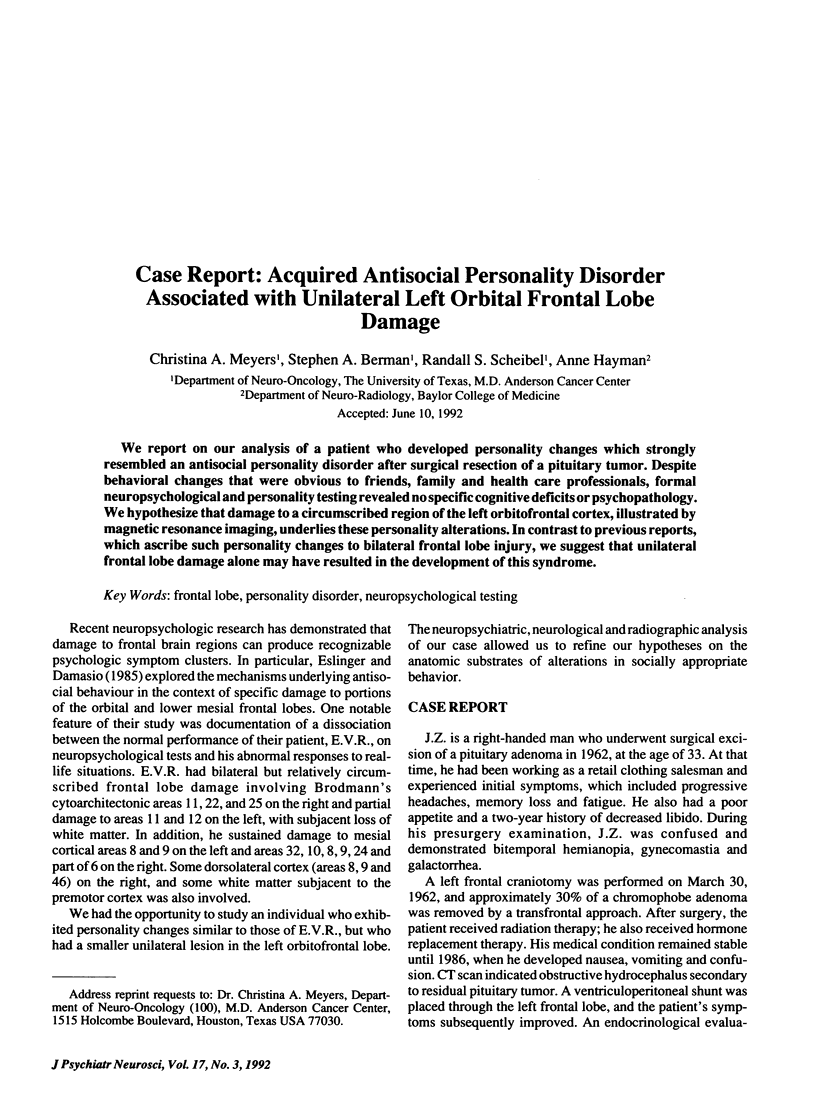
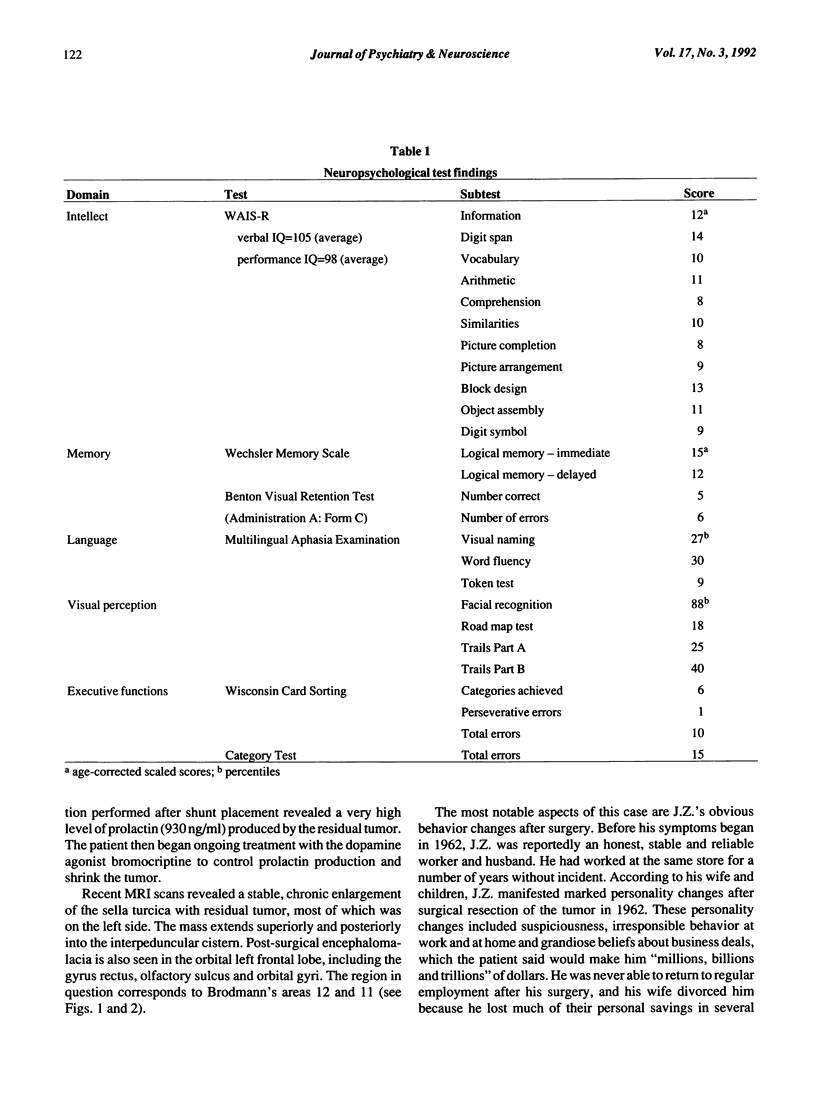
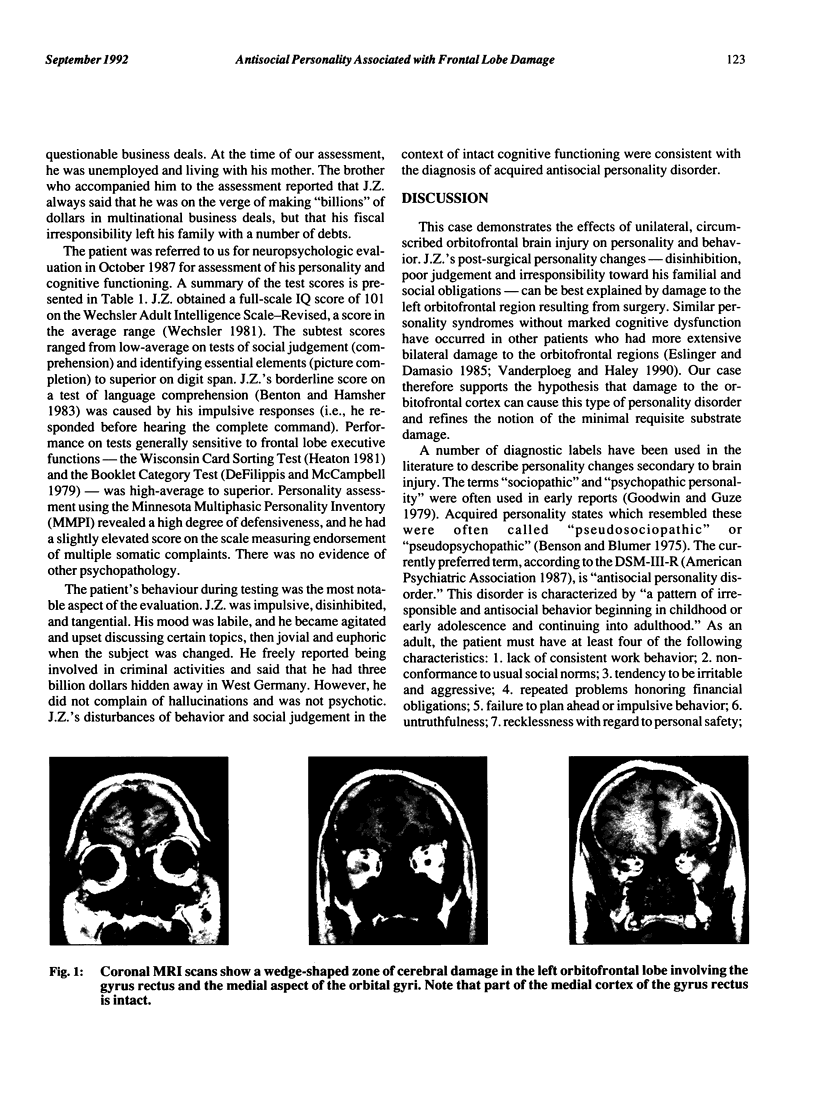
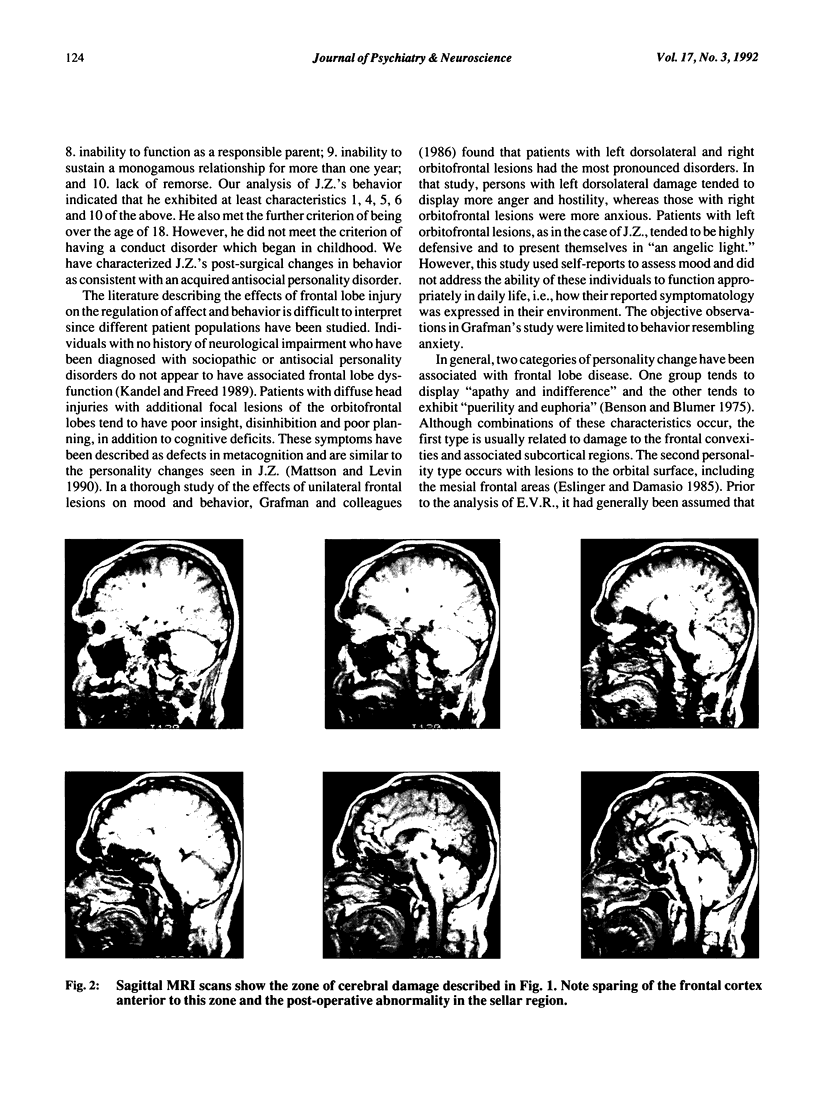
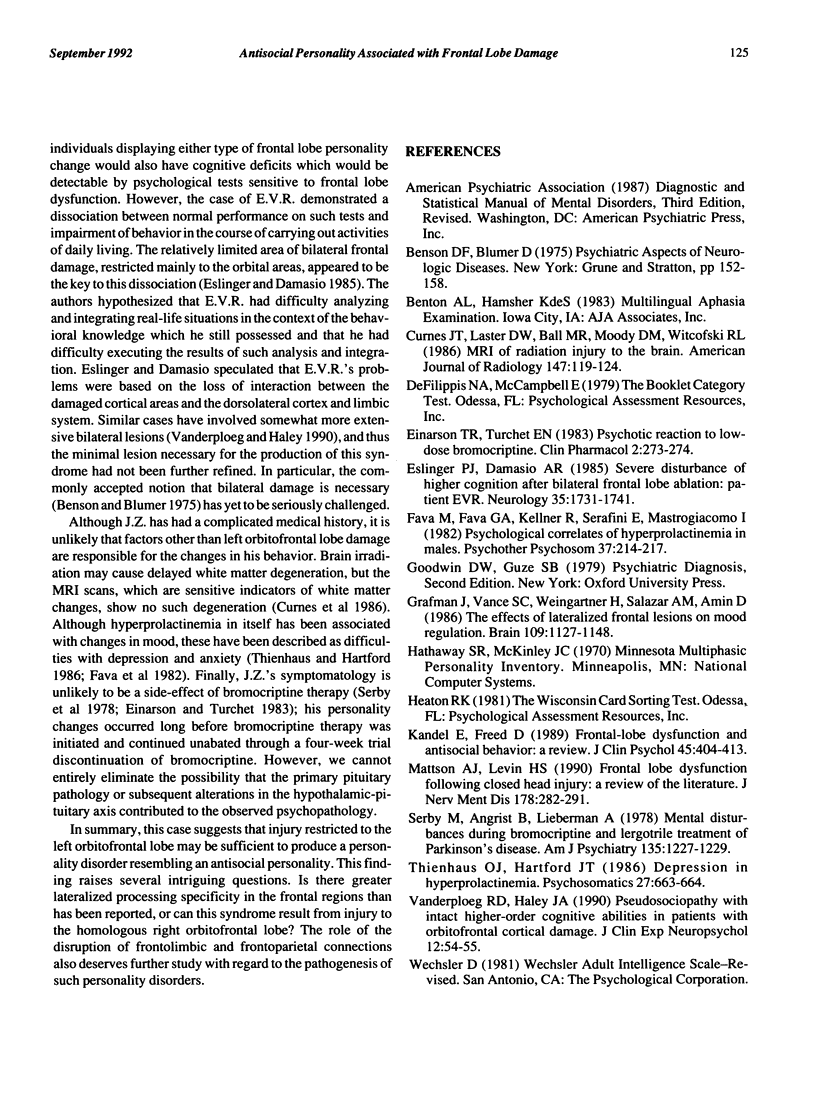
Images in this article
Selected References
These references are in PubMed. This may not be the complete list of references from this article.
- Curnes J. T., Laster D. W., Ball M. R., Moody D. M., Witcofski R. L. MRI of radiation injury to the brain. AJR Am J Roentgenol. 1986 Jul;147(1):119–124. doi: 10.2214/ajr.147.1.119. [DOI] [PubMed] [Google Scholar]
- Einarson T. R., Turchet E. N. Psychotic reaction to low-dose bromocriptine. Clin Pharm. 1983 May-Jun;2(3):273–274. [PubMed] [Google Scholar]
- Eslinger P. J., Damasio A. R. Severe disturbance of higher cognition after bilateral frontal lobe ablation: patient EVR. Neurology. 1985 Dec;35(12):1731–1741. doi: 10.1212/wnl.35.12.1731. [DOI] [PubMed] [Google Scholar]
- Fava M., Fava G. A., Kellner R., Serafini E., Mastrogiacomo I. Psychological correlates of hyperprolactinemia in males. Psychother Psychosom. 1982;37(4):214–217. doi: 10.1159/000287575. [DOI] [PubMed] [Google Scholar]
- Grafman J., Vance S. C., Weingartner H., Salazar A. M., Amin D. The effects of lateralized frontal lesions on mood regulation. Brain. 1986 Dec;109(Pt 6):1127–1148. doi: 10.1093/brain/109.6.1127. [DOI] [PubMed] [Google Scholar]
- Kandel E., Freed D. Frontal-lobe dysfunction and antisocial behavior: a review. J Clin Psychol. 1989 May;45(3):404–413. doi: 10.1002/1097-4679(198905)45:3<404::aid-jclp2270450309>3.0.co;2-g. [DOI] [PubMed] [Google Scholar]
- Mattson A. J., Levin H. S. Frontal lobe dysfunction following closed head injury. A review of the literature. J Nerv Ment Dis. 1990 May;178(5):282–291. doi: 10.1097/00005053-199005000-00002. [DOI] [PubMed] [Google Scholar]
- Serby M., Angrist B., Lieberman A. Mental disturbances during bromocriptine and lergotrile treatment of Parkinson's disease. Am J Psychiatry. 1978 Oct;135(10):1227–1229. doi: 10.1176/ajp.135.10.1227. [DOI] [PubMed] [Google Scholar]
- Thienhaus O. J., Hartford J. T. Depression in hyperprolactinemia. Psychosomatics. 1986 Sep;27(9):663–664. doi: 10.1016/S0033-3182(86)72636-4. [DOI] [PubMed] [Google Scholar]




